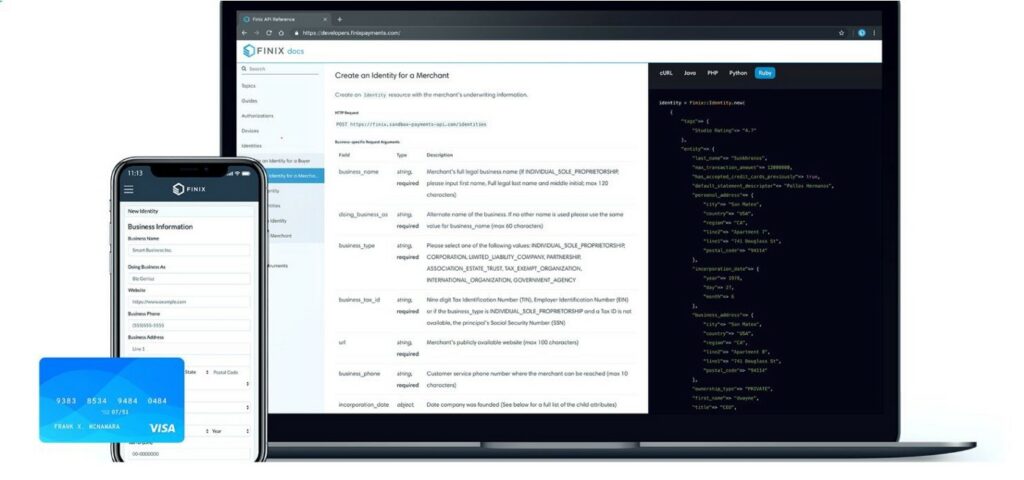
Only Up From Here: 2024’s State of Fintech and the Hero’s Journey
We’re at the scary part of “the hero’s journey” in fintech, with a bottom for funding and a BaaS crisis, but we’re about to enter a new, exciting stage.

Picture yourself at your local bookstore. If you’re me, you’re either buying an obscure military history tome or another copy of 10% Happier, my brother’s book about mindfulness. As you bring your book to the counter, you notice the owner of the store is using a system from Lightspeed POS Inc. to manage her business. From inventory management to her team’s work log, it’s all a click away on her tablet. Your credit card gets accepted without a hiccup, the owner slides your book in a paper bag, and you walk out.
While the bookstore was able to process your credit card seamlessly, historically it wasn’t without substantial effort on the merchant’s behalf.
The typical process went something like this. When initially setting up payments acceptance, the bookstore first had to pick a software provider (in this case, Lightspeed), and then separately, a payment provider (which Lightspeed may or may not have referred the merchant to). The payment provider then spent weeks putting the merchant through a costly, time-intensive, and cumbersome underwriting process.
Fast forward to today, Lightspeed has become a payment facilitator (“payfac”) under its ‘Lightspeed Payments’ offering. Effectively, Lightspeed has become the Merchant of Record to WorldPay, and therefore Lightspeed underwrites each merchant it onboards onto the software. This not only enables the bookstore to accept payments within minutes, but also allows the software company (i.e., Lightspeed) to capture substantially more of the payment flow economics.
At Bain Capital Ventures, we believe this shift of software companies more deeply integrating payments into their core value proposition is not a one-off particular to Lightspeed. More and more, we’re witnessing large software companies working to embed payments capabilities into their core offering to capture more value from the payments stream they create, as well as offer a more seamless experience to their customers.
How can they do this?
That’s why today we are thrilled to announce that we’re leading a $17.5 million Series A in Finix, a middleware platform and set of value added software-based services that allow software companies to become payment facilitators. In other words, they’re providing the technology infrastructure (i.e., compliance, underwriting, tokenization APIs) to allow software-driven businesses to more elegantly and easily add payments to their solution set.
Payments is a large and growing market, and the integrated payments segment is quickly taking share.
In terms of revenue, profits and equity value creation, payments has been a substantial contributor across organizations of different sizes, from startups to scaled companies like FIS and Fiserv. In 2018, payment revenue for North America alone totaled $187 billion, $14.5 billion of which was driven by software vendors.
The transition from analog to digital, and from banks to technology companies, has created a massive tailwind for a large set of tech-enabled players. Within these broad growth trends, the most evident is the integrated payments trend, where software companies leverage their prominent and data rich relationship with merchants to take over the payments acceptance function. As predicted by Boston Consulting Group’s “Global Payments: The Interactive Edition,” by 2027, software vendors are expected to represent $154 billion of North American payment revenue (54 percent of total).
Finix’s product has seen rapid adoption, and has strong momentum in its pipeline.
Finix has demonstrated a number of critical elements of commercial traction in its seed phase, winning deals with scaled software players, emerging software players, processors, and banks. Lightspeed, for example, recently partnered with Finix to help launch ‘Lightspeed Payments.’ In Lightspeed ’s S1, the company touts the benefits of becoming a payment facilitator, specifically outlining the jump in its fees from a 0.25 percent referral fee of the transactions processed to a 0.65 percent take rate. Payment processors have, and intend to continue, leveraging Finix to enable their end clients to become payfacs. Even banks are customers of Finix, as they realize the need to adopt this type of technology to compete more effectively with tech-enabled processors.
Strong team with highly distinctive domain expertise.
With Finix, we were fortunate to work with two co-founders who have a deep and comprehensive view of the payments landscape. There are relatively few startups that have built a full-stack, modern payment gateway — a list that would include Stripe, Braintree/Paypal, WePay, and Balanced. Finix has two of the key Balanced team members. Specifically, Finix Co-founder and CEO Richie Serna was previously an engineer at Balanced. Finix Co-founder and COO Sean Donovan was COO of Klarna US and previously worked at Vantiv/Worldpay while they invented the payfac model.
We are honored to add Finix to the Bain Capital Ventures portfolio, which encompasses a notable number payments software companies including: Passport (parking and payments software for the transportation industry), Flywire (higher education payments software), AvidXchange (automated bill payment and AP solutions), Signifyd (guaranteed payments fraud protection for retailers), Billtrust (automated PCM and AR payment management solutions), and Booker (service management software).
The opportunities ahead for software companies are many. We couldn’t be more excited to partner with Richie, Sean, the entire Finix team, and a stellar group of co-investors including Insight Partners, Aspect Ventures, Homebrew Ventures, Precursor Ventures, Act One Ventures, and Visa to drive the revolution of software companies becoming payment facilitators.
We’re at the scary part of “the hero’s journey” in fintech, with a bottom for funding and a BaaS crisis, but we’re about to enter a new, exciting stage.
Relay is reinventing banking with more software and intelligence for every small business owner.
Generative AI can make companies more efficient, but customers have more to gain from it than they do — including in banking, commerce and medicine.